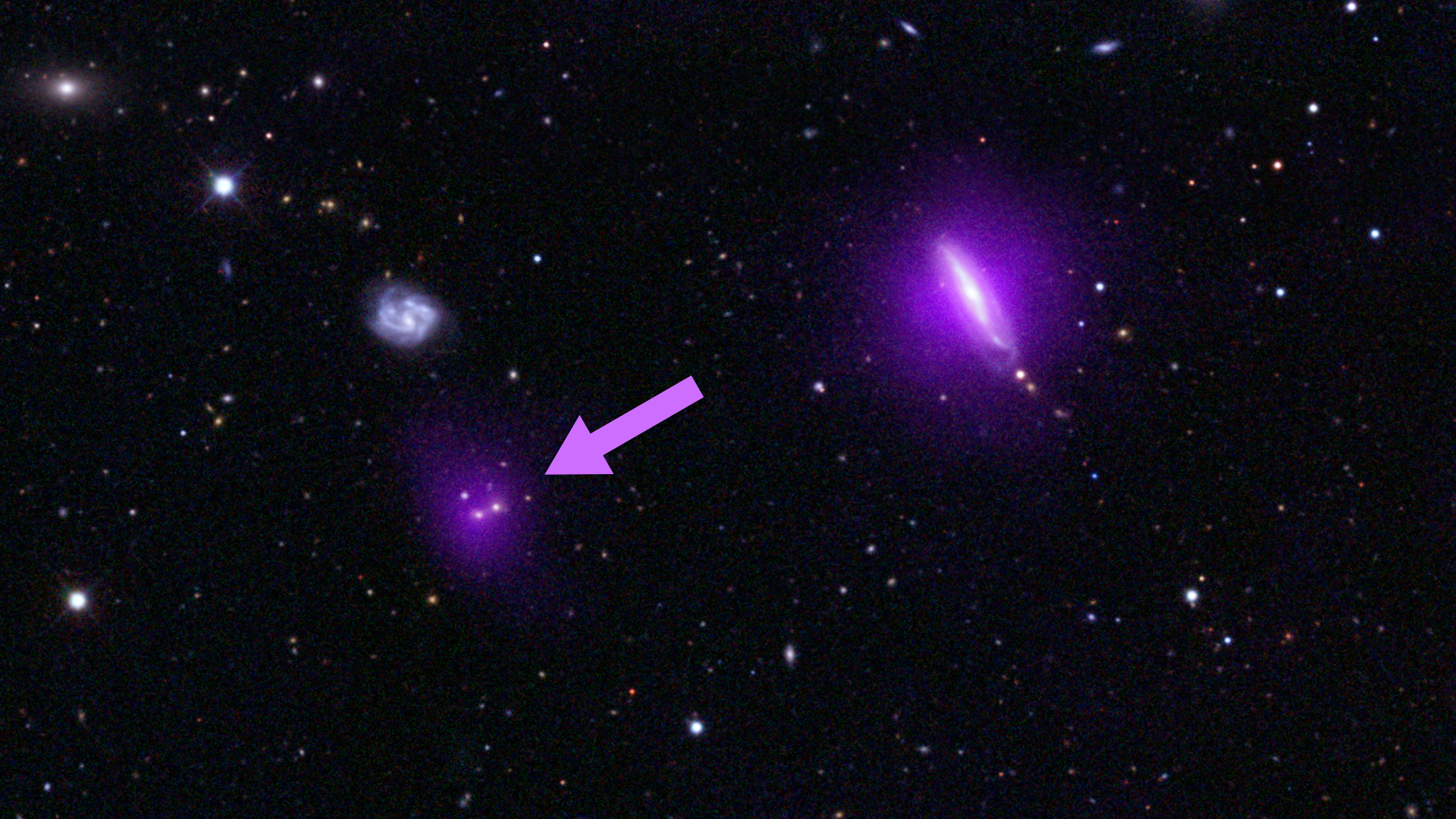NASA Space Telescope Discovers 10 Monster Black Holes

A powerful NASA space telescope has found not one, but 10 monster black holes lurking in the hearts of distant galaxies — the first major finds for the X-ray space observatory, scientists say.
The discoveries, which scientists say occurred "serendipitously," were made as astronomers reviewed images from NASA's Nuclear Spectroscopic Telescope Array (NuSTAR), an X-ray space telescope designed specifically to hunt black holes.
"We were looking at known targets and spotted the black holes in the background of the images," David Alexander, a professor with Durham University's physics department, said in a statement.
Then the team confirmed what they saw with observations from NASA's Chandra X-ray Observatory and the European Space Agency's XMM-Newton satellite, which also can look at low-energy light.
The 10 black holes discovered are just the beginning of hundreds of expected finds, the scientists added. With every supermassive black hole catalogued, scientists are hoping to better understand the population.
Surrounded by galaxies
According to NASA, discovering the supermassive black holes were a key piece of a puzzle first uncovered in 1962. Astronomers found a glow of X-rays in the background of the universe, but didn't know where the glow came from.
Get the Space.com Newsletter
Breaking space news, the latest updates on rocket launches, skywatching events and more!
Today, scientists know the glow (also called the cosmic X-ray background) comes from very distant supermassive black holes, some of which are as large as 17 billion times the mass of the sun. But how these black holes form is still under investigation.
"Our early results show that the more distant supermassive black holes are encased in bigger galaxies," stated Daniel Stern, a co-author of the study and the project scientist for NuSTAR at NASA's Jet Propulsion Laboratory. "This is to be expected. Back when the universe was younger, there was a lot more action with bigger galaxies colliding, merging and growing."
While NuSTAR can detect these big black holes, other measurements (such as mass) come from agency observatories including the Wide-field Infrared Survey Explorer (WISE) and Spitzer Space Telescope.
The research appeared Aug. 20 in the Astrophysical Journal.
Follow Elizabeth Howell @howellspace, or SPACE.com @Spacedotcom. We're also on Facebookand Google+. Original article on SPACE.com.
Join our Space Forums to keep talking space on the latest missions, night sky and more! And if you have a news tip, correction or comment, let us know at: community@space.com.

Elizabeth Howell (she/her), Ph.D., was a staff writer in the spaceflight channel between 2022 and 2024 specializing in Canadian space news. She was contributing writer for Space.com for 10 years from 2012 to 2024. Elizabeth's reporting includes multiple exclusives with the White House, leading world coverage about a lost-and-found space tomato on the International Space Station, witnessing five human spaceflight launches on two continents, flying parabolic, working inside a spacesuit, and participating in a simulated Mars mission. Her latest book, "Why Am I Taller?" (ECW Press, 2022) is co-written with astronaut Dave Williams.
